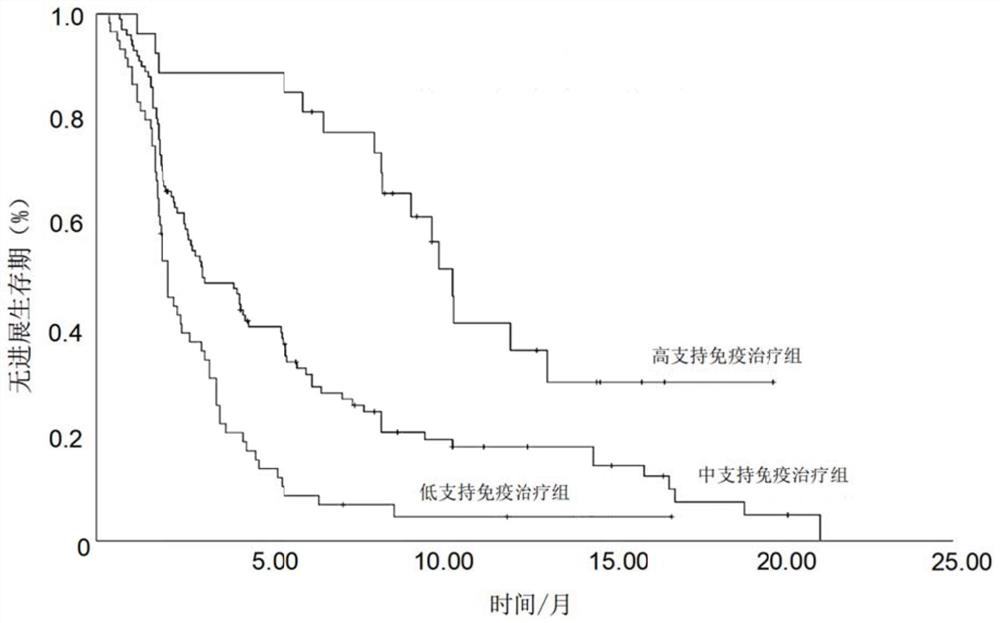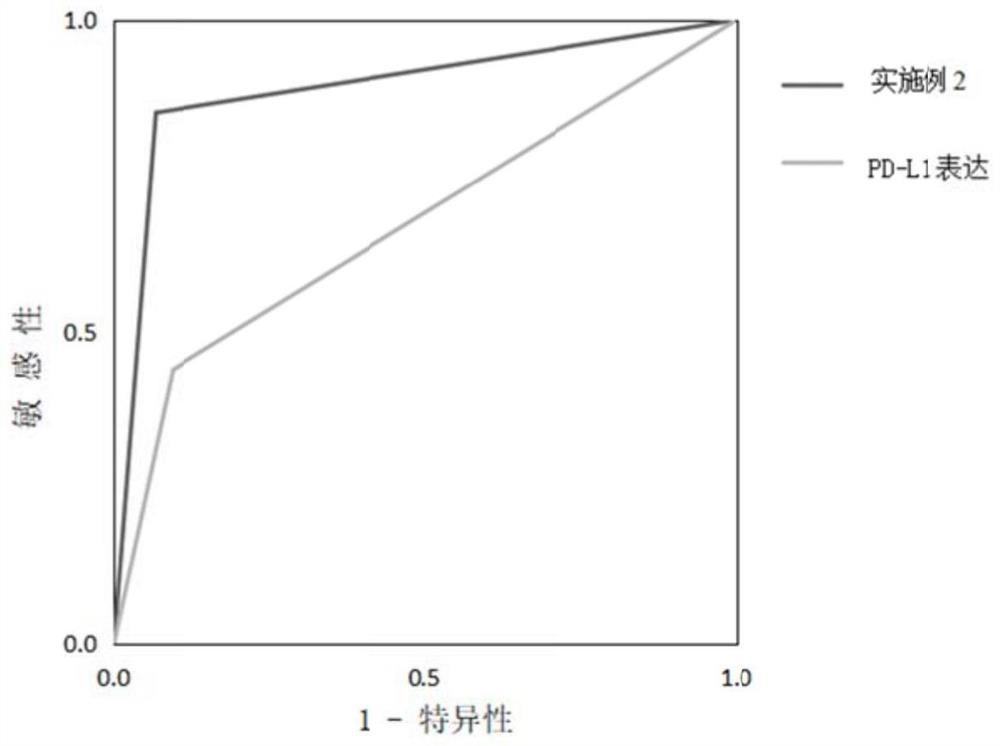Gene markers for forecasting immunotherapy effect on cancer and application of gene markers
A gene marker and immunotherapy technology, applied in the field of gene markers for predicting the effect of cancer immunotherapy, can solve the problem that the clinical efficacy and benefit of patients cannot be completely and accurately predicted, and achieve reliable and cost-effective detection of gene mutation status. The effect of low, accurate prediction results
- Summary
- Abstract
- Description
- Claims
- Application Information
AI Technical Summary
Problems solved by technology
Method used
Image
Examples
Embodiment 1
[0061] Example 1 Target screening for predicting the effect of cancer immunotherapy
[0062] The samples came from 29 patients with advanced lung adenocarcinoma who received immunotherapy at Memorial Sloan Kettering Cancer Center between 2012 and 2013. The patient's treatment plan is: inject pembrolizumab once every 2-3 weeks, and the dosage is 10mg / kg. Tumor samples were taken from the primary tumor, metastases and lymph nodes, including fresh tissue and paraffin-embedded tissue, and the control group was taken from the patient's blood. Tumor tissue was confirmed by HE staining before tumor specimen sequencing.
[0063] DNA was extracted using the DNEasy kit (Qiagen), and then the exon sequences were captured and enriched using SureSelect Human All Exonv2.0 (Agilent, 44Mb) according to the instructions of the product. The enriched exome library was then bidirectionally sequenced using the Illumina HiSeq2000 sequencing system to achieve an average sequencing depth of 150X. ...
Embodiment 3 Embodiment 1
[0086] Example 3 Comparison between the model constructed in Example 1 and the predictive performance of PD-L1
[0087] Based on the existing literature, the expression of PD-L1 ≥ 50% is regarded as the gold standard for predicting the benefit of immunotherapy. In order to further verify the effect of the model constructed in Example 1 to predict the effect of immunotherapy, the expression of PD-L1 and the model constructed in Example 1 were used respectively. These two markers were modeled to predict the benefit, see Table 5 for details.
[0088] Table 5 The model constructed in Example 1 and the predicted benefits of PD-L1 expression
[0089]
[0090] It can be seen that when the expression of PD-L1 predicts the benefit of immunotherapy, the number of benefiters is 16, of which 11 are clinically beneficial, and 5 are not clinically beneficial; the number of non-benefit is 62, of which clinically true There were 14 people who benefited from it, and 48 people who did not b...
PUM
 Login to View More
Login to View More Abstract
Description
Claims
Application Information
 Login to View More
Login to View More - Generate Ideas
- Intellectual Property
- Life Sciences
- Materials
- Tech Scout
- Unparalleled Data Quality
- Higher Quality Content
- 60% Fewer Hallucinations
Browse by: Latest US Patents, China's latest patents, Technical Efficacy Thesaurus, Application Domain, Technology Topic, Popular Technical Reports.
© 2025 PatSnap. All rights reserved.Legal|Privacy policy|Modern Slavery Act Transparency Statement|Sitemap|About US| Contact US: help@patsnap.com



